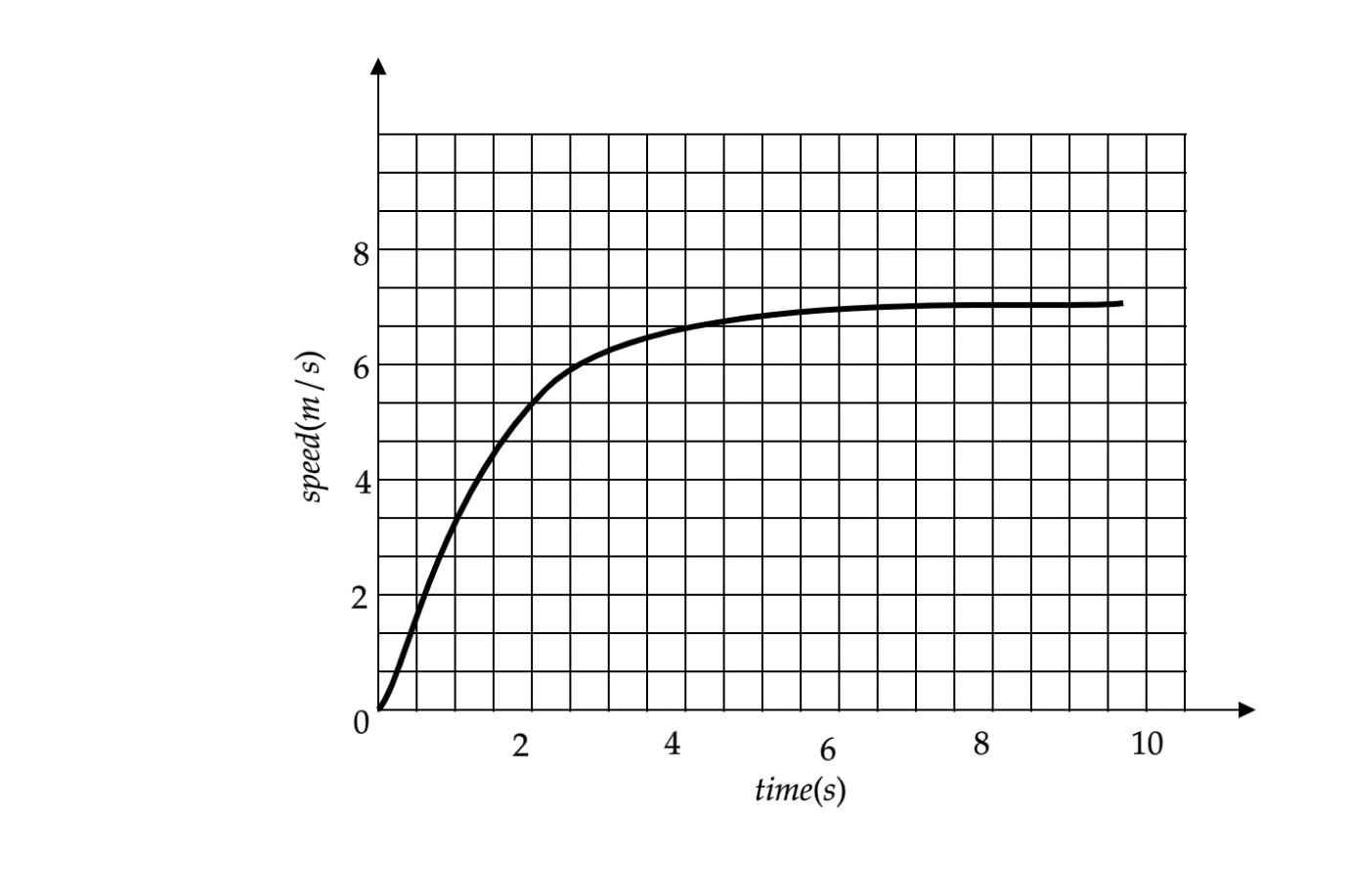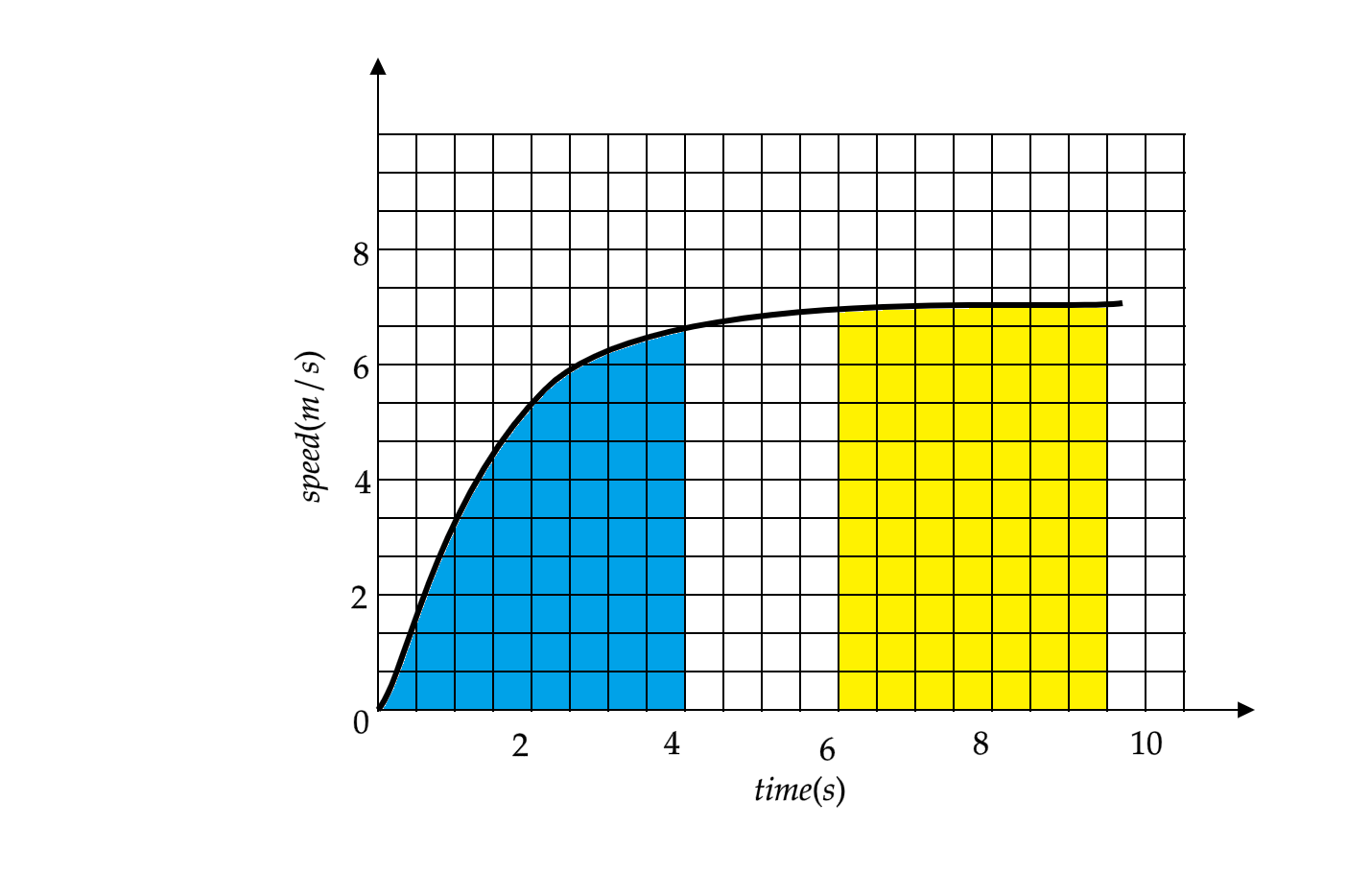
The speed-time graph for a car is shown in the figure.
(a) Find how far the car travels in the first
(b) Which part of the graph represents the uniform motion of the car?


Answer
491.4k+ views
Hint
The area of a graph represents the product of the quantities given on the axes. Here, we have been given the speed of the car along the y-axis and the time for which the car travels is shown along the x-axis. The curve of the graph starts at the origin and rises steeply with a constant slope until it curves around and becomes almost parallel to the x-axis. Let’s see a detailed analysis.
Complete step by step answer
As discussed, the area of the graph would give us the distance travelled (since the distance travelled is a product of the speed and time) and the speed and time are represented on the axes.

(a) The area of the curve is given by the region between the curve and the x-axis. For the first
(b) Now we have been asked the region of uniform motion of the car; uniform motion is analogous to a uniform velocity. So if we find the region of the graph that shows the car moving with a uniform speed or velocity, we can mark that region as a region of uniform motion. Following this analogy, we can say that the region of the graph from
Note
The slope of the curve of the graph in the first
The area of a graph represents the product of the quantities given on the axes. Here, we have been given the speed of the car along the y-axis and the time for which the car travels is shown along the x-axis. The curve of the graph starts at the origin and rises steeply with a constant slope until it curves around and becomes almost parallel to the x-axis. Let’s see a detailed analysis.
Complete step by step answer
As discussed, the area of the graph would give us the distance travelled (since the distance travelled is a product of the speed and time) and the speed and time are represented on the axes.

(a) The area of the curve is given by the region between the curve and the x-axis. For the first
(b) Now we have been asked the region of uniform motion of the car; uniform motion is analogous to a uniform velocity. So if we find the region of the graph that shows the car moving with a uniform speed or velocity, we can mark that region as a region of uniform motion. Following this analogy, we can say that the region of the graph from
Note
The slope of the curve of the graph in the first
Latest Vedantu courses for you
Grade 8 | CBSE | SCHOOL | English
Vedantu 8 CBSE Pro Course - (2025-26)
School Full course for CBSE students
₹45,300 per year
Recently Updated Pages
Master Class 11 Economics: Engaging Questions & Answers for Success

Master Class 11 Business Studies: Engaging Questions & Answers for Success

Master Class 11 Accountancy: Engaging Questions & Answers for Success

Master Class 11 English: Engaging Questions & Answers for Success

Master Class 11 Computer Science: Engaging Questions & Answers for Success

Master Class 11 Maths: Engaging Questions & Answers for Success

Trending doubts
State and prove Bernoullis theorem class 11 physics CBSE

1 ton equals to A 100 kg B 1000 kg C 10 kg D 10000 class 11 physics CBSE

State the laws of reflection of light

One Metric ton is equal to kg A 10000 B 1000 C 100 class 11 physics CBSE

1 Quintal is equal to a 110 kg b 10 kg c 100kg d 1000 class 11 physics CBSE

Difference Between Prokaryotic Cells and Eukaryotic Cells




